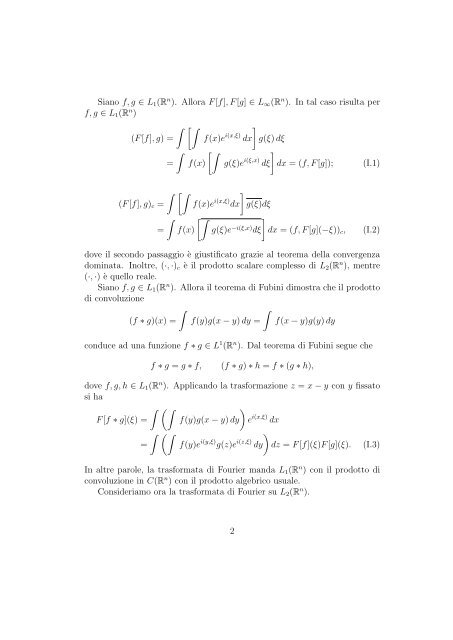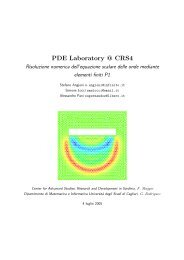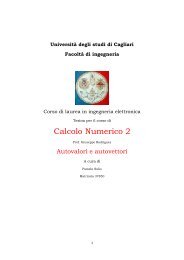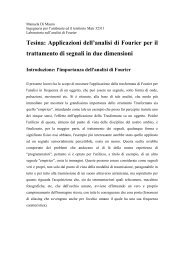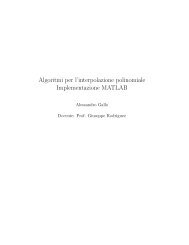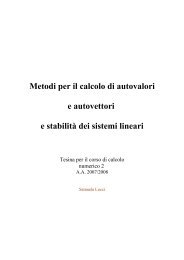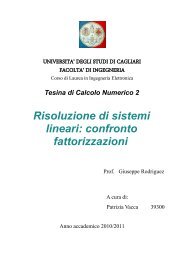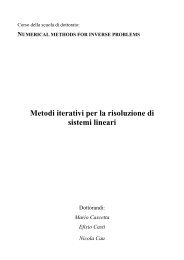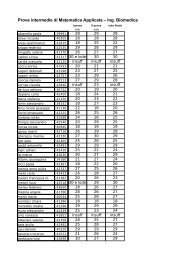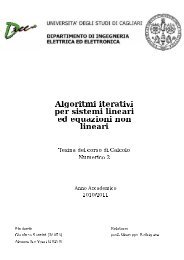TRASFORMATA DI FOURIER E LE FUNZIONI ARMONICHE
TRASFORMATA DI FOURIER E LE FUNZIONI ARMONICHE
TRASFORMATA DI FOURIER E LE FUNZIONI ARMONICHE
Create successful ePaper yourself
Turn your PDF publications into a flip-book with our unique Google optimized e-Paper software.
Siano f, g ∈ L 1 (R n ). Allora F [f], F [g] ∈ L ∞ (R n ). In tal caso risulta perf, g ∈ L 1 (R n )∫ [∫](F [f], g) = f(x)e i(x,ξ) dx g(ξ) dξ∫ [∫]= f(x) g(ξ)e i(ξ,x) dξ dx = (f, F [g]); (I.1)∫ [∫(F [f], g) c =∫=[∫f(x)]f(x)e i(x,ξ) dx g(ξ)dξ]g(ξ)e −i(ξ,x) dξ dx = (f, F [g](−ξ)) c ,(I.2)dove il secondo passaggio è giustificato grazie al teorema della convergenzadominata. Inoltre, (·, ·) c è il prodotto scalare complesso di L 2 (R n ), mentre(·, ·) è quello reale.Siano f, g ∈ L 1 (R n ). Allora il teorema di Fubini dimostra che il prodottodi convoluzione∫∫(f ∗ g)(x) = f(y)g(x − y) dy = f(x − y)g(y) dyconduce ad una funzione f ∗ g ∈ L 1 (R n ). Dal teorema di Fubini segue chef ∗ g = g ∗ f,(f ∗ g) ∗ h = f ∗ (g ∗ h),dove f, g, h ∈ L 1 (R n ). Applicando la trasformazione z = x − y con y fissatosi ha∫ (∫)F [f ∗ g](ξ) = f(y)g(x − y) dy e i(x,ξ) dx∫ (∫)= f(y)e i(y,ξ) g(z)e i(z,ξ) dy dz = F [f](ξ)F [g](ξ). (I.3)In altre parole, la trasformata di Fourier manda L 1 (R n ) con il prodotto diconvoluzione in C(R n ) con il prodotto algebrico usuale.Consideriamo ora la trasformata di Fourier su L 2 (R n ).2


